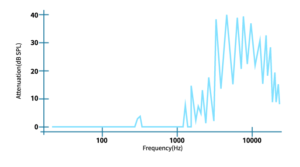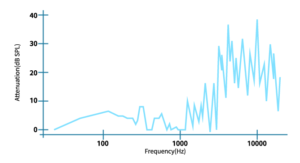Noise Cancelling
Noise cancelling is a more advanced technique compared to noise suppression, capable of actively removing noise and disturbances. The concept involves generating sound waves with opposite phases to cancel out detected noise, and the intensity of the positive and negative sound waves should be equal.
Noise cancelling is commonly used in conference audio systems and headphones. Currently, the automotive industry is also working towards in-car noise cancelling, although it is still under development. Taking headphones as an example, there are two types of noise cancelling: Passive Noise Cancelling (PNC) and Active Noise Cancelling (ANC). PNC, also known as noise isolation, essentially uses earbuds or earcups to tightly cover the ears, blocking external noise in a sealed environment. This type of headphone is typically either in-ear (insert type) or closed-back headphones, as achieving a certain level of airtightness is essential. The opposite of closed-back headphones is open-back headphones, which lack effective sealing. Some manufacturers still produce open-back headphones because they provide a more natural soundstage, and their lower sense of pressure makes them more comfortable, avoiding heat and discomfort during extended use.
The noise attenuation achieved by PNC is shown in the diagram above, where significant noise reduction is observed in the mid-to-high frequencies, while low frequencies are barely affected. This is because low frequencies inherently have stronger penetration compared to high frequencies, and low-frequency diffraction is also more pronounced, allowing low-frequency noise to pass through external barriers.
To eliminate low-frequency noise, the speaker’s maximum output in the low-frequency range must exceed 115dB, covering frequencies from approximately 100Hz to 1,000Hz. Extremely low-frequency noise usually does not require special treatment because the human ear is inherently less sensitive to it, and it is more challenging to process. A microphone with a very low Low-Frequency Roll Off (LFRO), possibly below 50Hz or even 10Hz, is required. Typically, a specially designed MEMS microphone can achieve such performance.
For ANC in headphones, two microphones are usually deployed. One is a feedforward microphone that captures external sounds and is best used with a Finite Impulse Response (FIR) filter. The other is a feedback microphone that captures internal sounds within the ear and works well with an Infinite Impulse Response (IIR) filter. A general rule for ANC feedback is that when the phase exceeds 180 degrees, the loop gain must remain below 1; otherwise, unwanted noise may occur. For mid-to-high frequencies, violating this principle could lead to echo-like howling, while low frequencies could produce a low-frequency rumbling. To prevent such issues, ANC systems should use components with minimum phase shift properties, reducing phase delay to maintain effective control over ANC gain. Mechanically, the microphone and driver unit should be as close as possible to reduce delay, but this may complicate echo cancellation.
To prevent ANC howling in headphones, ear proximity sensing can be implemented. ANC can be programmed to activate only after the earphones are properly inserted and sealed in the ear canal. This can be achieved using optical sensors to confirm whether the earphones are in place. If ANC activates during the process of inserting the earphones, the low-frequency noise caused by rubbing against the ear canal might be captured, overloading the ANC system and resulting in uncontrolled noise.



